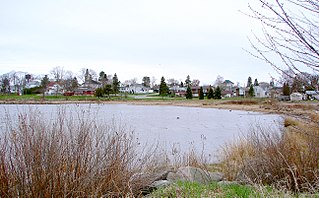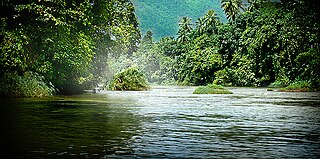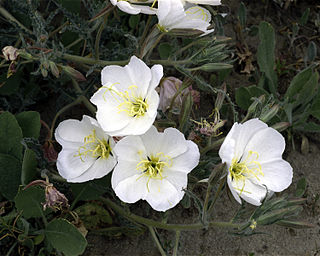Related Research Articles

A beach is a landform alongside a body of water which consists of loose particles. The particles composing a beach are typically made from rock, such as sand, gravel, shingle, pebbles, etc., or biological sources, such as mollusc shells or coralline algae. Sediments settle in different densities and structures, depending on the local wave action and weather, creating different textures, colors and gradients or layers of material.

The Sand Pebbles is a 1966 American epic war film directed by Robert Wise in Panavision. It tells the story of an independent, rebellious U.S. Navy machinist's mate first class, aboard the fictional river gunboat USS San Pablo, on Yangtze Patrol in 1920s China. The production was filmed on location in Taiwan and Hong Kong.

Ottawa is a city in and the county seat of LaSalle County, Illinois, United States. It is located at the confluence of the navigable Fox River and Illinois River, the latter being a conduit for river barges and connects Lake Michigan at Chicago, to the Mississippi River, and North America's 25,000 mile river system. The population estimate was 18,668, as of 2022. It is the principal city of the Ottawa, IL Micropolitan Statistical Area.

The Namib is a coastal desert in Southern Africa. According to the broadest definition, the Namib stretches for more than 2,000 kilometres (1,200 mi) along the Atlantic coasts of Angola, Namibia, and northwest South Africa, extending southward from the Carunjamba River in Angola, through Namibia and to the Olifants River in Western Cape, South Africa. The Namib's northernmost portion, which extends 450 kilometres (280 mi) from the Angola-Namibia border, is known as Moçâmedes Desert, while its southern portion approaches the neighboring Kalahari Desert. From the Atlantic coast eastward, the Namib gradually ascends in elevation, reaching up to 200 kilometres (120 mi) inland to the foot of the Great Escarpment. Annual precipitation ranges from 2 millimetres (0.079 in) in the aridest regions to 200 millimetres (7.9 in) at the escarpment, making the Namib the only true desert in southern Africa. Having endured arid or semi-arid conditions for roughly 55–80 million years, the Namib may be the oldest desert in the world and contains some of the world's driest regions, with only western South America's Atacama Desert to challenge it for age and aridity benchmarks.

Longshore drift from longshore current is a geological process that consists of the transportation of sediments along a coast parallel to the shoreline, which is dependent on the angle of incoming wave direction. Oblique incoming wind squeezes water along the coast, generating a water current that moves parallel to the coast. Longshore drift is simply the sediment moved by the longshore current. This current and sediment movement occurs within the surf zone. The process is also known as littoral drift.

Thunder Bay District is a district and census division in Northwestern Ontario in the Canadian province of Ontario. The district seat is Thunder Bay.

Port McNeill is a town in the North Island region of Vancouver Island, British Columbia, Canada on Vancouver Island's northeast shore, on Queen Charlotte Strait. Originally a base camp for loggers, it became a settlement in 1936. It was named after Captain William Henry McNeill of the Hudson's Bay Company.

Blind River is a town situated on the North Channel of Lake Huron in the Algoma District, Ontario, Canada. The town, named after the nearby Blind River, celebrated its centennial in 2006.

Richard Milton McKenna was an American sailor and novelist. He was best known for his historical novel The Sand Pebbles, which tells the story of an American sailor serving aboard a gunboat on the Chinese Yangtze River in 1925.

Sand animation is the manipulation of sand in real time to create animation. In the performance art, an artist creates a series of images using sand, a process which is achieved by applying sand to a surface and then rendering images by drawing lines and figures in the sand with one's hands. A sand animation performer will often use the aid of an overhead projector or lightbox. To make an animated film, sand is moved on a backlit or frontlit piece of glass to create each frame.
Sandor Stern is a Canadian writer, director and film producer best known for his horror films.
Robert Grosvenor Gardner was an American academic, anthropologist, and documentary filmmaker who was the Director of the Film Study Center at Harvard University from 1956 to 1997. Gardner is known for his work in the field of visual anthropology and films like the National Film Registry inductee Dead Birds and Forest of Bliss. In 2011, a retrospective of his work was held at Film Forum, New York.
"Cowgirl in the Sand" is a song written by Neil Young and first released on his 1969 album Everybody Knows This Is Nowhere. Young has included live versions of the song on several albums and on the Crosby, Stills, Nash and Young album 4 Way Street. It has also been covered by The Byrds on their self-titled album. Like three other songs from Everybody Knows This Is Nowhere, "Cinnamon Girl", "Down by the River" and the title track, Young wrote "Cowgirl in the Sand" while he was suffering from the flu with a high fever at his home in Topanga, California.

The Kelani River is a 145-kilometre-long (90 mi) river in Sri Lanka. The fourth-longest river in the country, it stretches from the Sri Pada Mountain Range to Colombo. It flows through or borders the Sri Lankan districts of Nuwara Eliya, Ratnapura, Kegalle, Gampaha and Colombo. The Kelani River also flows through the capital of Sri Lanka, Colombo, and provides 80% of its drinking water.

Arthur George Murcell was a British character actor.

Sand is a granular material composed of finely divided mineral particles. Sand has various compositions but is defined by its grain size. Sand grains are smaller than gravel and coarser than silt. Sand can also refer to a textural class of soil or soil type; i.e., a soil containing more than 85 percent sand-sized particles by mass.

Antioch Dunes National Wildlife Refuge is a sensitive sand dune habitat located near the city of Antioch, California on the south shore of the San Joaquin River-Stockton Deepwater Shipping Channel. It serves as a refuge for three endangered species of plants and insects, and is closed to the public except for tours and events supervised by Refuge staff. The Refuge was established in 1980. It is managed by the U.S. Fish and Wildlife Service.
The Sand Castle is a 1977 stop motion animated short created by Co Hoedeman for the National Film Board of Canada. It won the Academy Award for Best Animated Short Film at the 50th Academy Awards.
References
- ↑ "Bringing Faraway Worlds Closer, And Questioning Western Intrusions". New York Times . November 10, 2011.